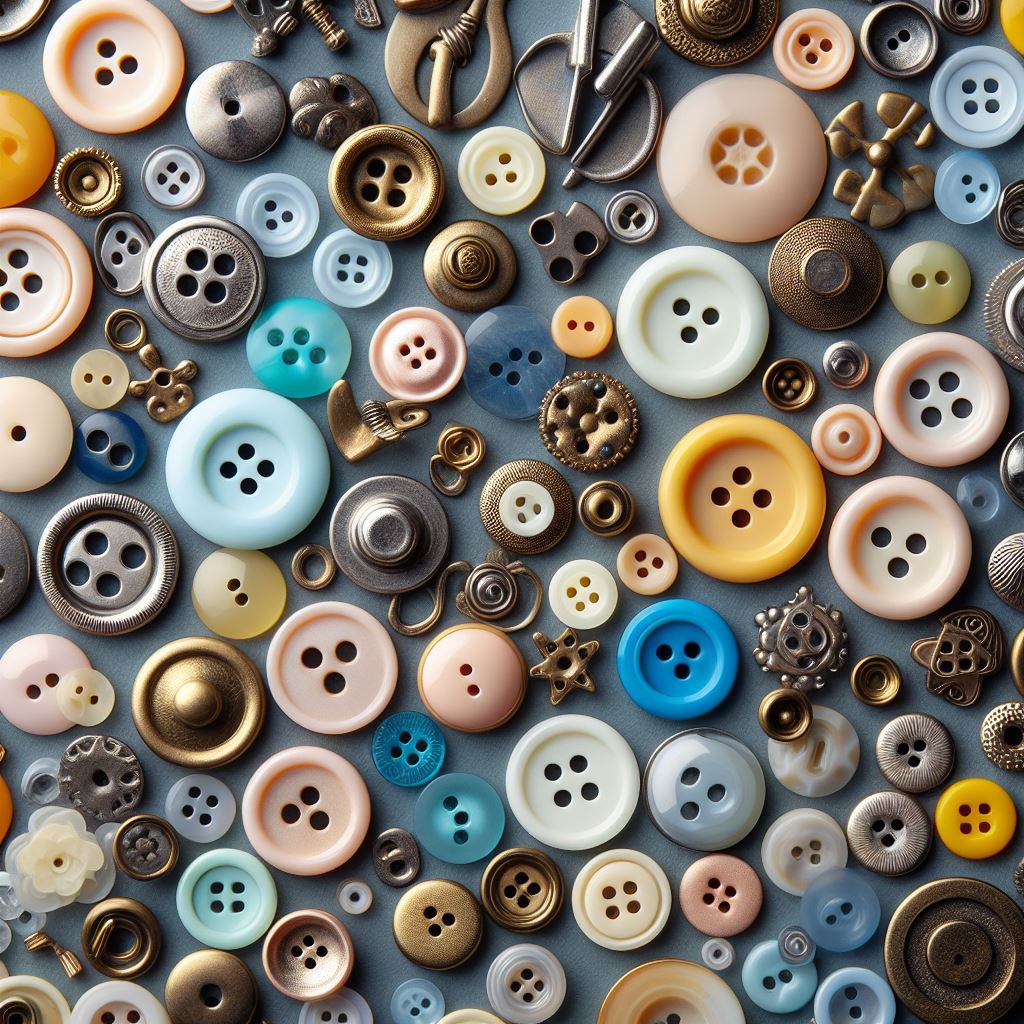Buttons may be small in size, but their impact on garment design and functionality is immense. From adding decorative flair to securing closures, buttons come in a variety of types, materials, and styles, each serving a unique purpose in the fashion and garment industry. Let’s delve into the fascinating world of buttons and explore the different types commonly used in garment manufacturing.
- Flat Buttons: Flat buttons, also known as 2-hole buttons, are among the most common types of buttons. They have two small holes for sewing onto garments and come in various shapes, sizes, and materials. Flat buttons are versatile and can be used in a wide range of garments, from shirts and blouses to pants and skirts.
- Shank Buttons: Unlike flat buttons, shank buttons have a loop or shank on the back instead of holes. This design allows them to sit slightly raised from the fabric when attached, adding dimension and style to garments. Shank buttons are often used in coats, jackets, and formal wear, where a more decorative and elevated look is desired.
- 4-Hole Buttons: As the name suggests, 4-hole buttons have four sewing holes instead of two. This design provides more stability and security when attached to garments, making them suitable for heavy fabrics and outerwear. 4-hole buttons come in various shapes and sizes and are commonly used in shirts, blouses, and cardigans.
- Toggle Buttons: Toggle buttons feature a distinct shape with a bar or toggle that passes through a loop or buttonhole to secure the garment. These buttons add a unique and rustic charm to jackets, coats, and sweaters, and are often made from natural materials like wood or horn.
- Snap Buttons: Snap buttons, also known as press studs or poppers, consist of two interlocking discs that snap together when pressed. They provide a convenient and secure closure option for garments like shirts, jackets, and trousers. Snap buttons are commonly made of metal or plastic and are available in various sizes and strengths.
- Covered Buttons: Covered buttons are buttons that are encased in fabric, creating a seamless and cohesive look with the garment. They are often used in formal wear, bridal gowns, and couture garments, where attention to detail and craftsmanship are paramount. Covered buttons can be customized to match the fabric of the garment, adding a luxurious touch to the design.
- Novelty Buttons: Novelty buttons come in a wide range of fun and whimsical designs, ranging from animals and flowers to geometric shapes and symbols. These buttons add personality and flair to garments, making them popular choices for children’s clothing, casual wear, and accessories.
In conclusion, buttons are not just functional fasteners; they are also essential design elements that contribute to the overall aesthetic and style of garments in the fashion and garment industry. By understanding the different types of buttons available and their respective characteristics, designers, retailers, and merchandisers can make informed decisions to enhance the visual appeal and functionality of their products. Whether it’s adding a touch of elegance with shank buttons or injecting playfulness with novelty buttons, the right choice of buttons can elevate the design and elevate the design and appeal of any garment.
